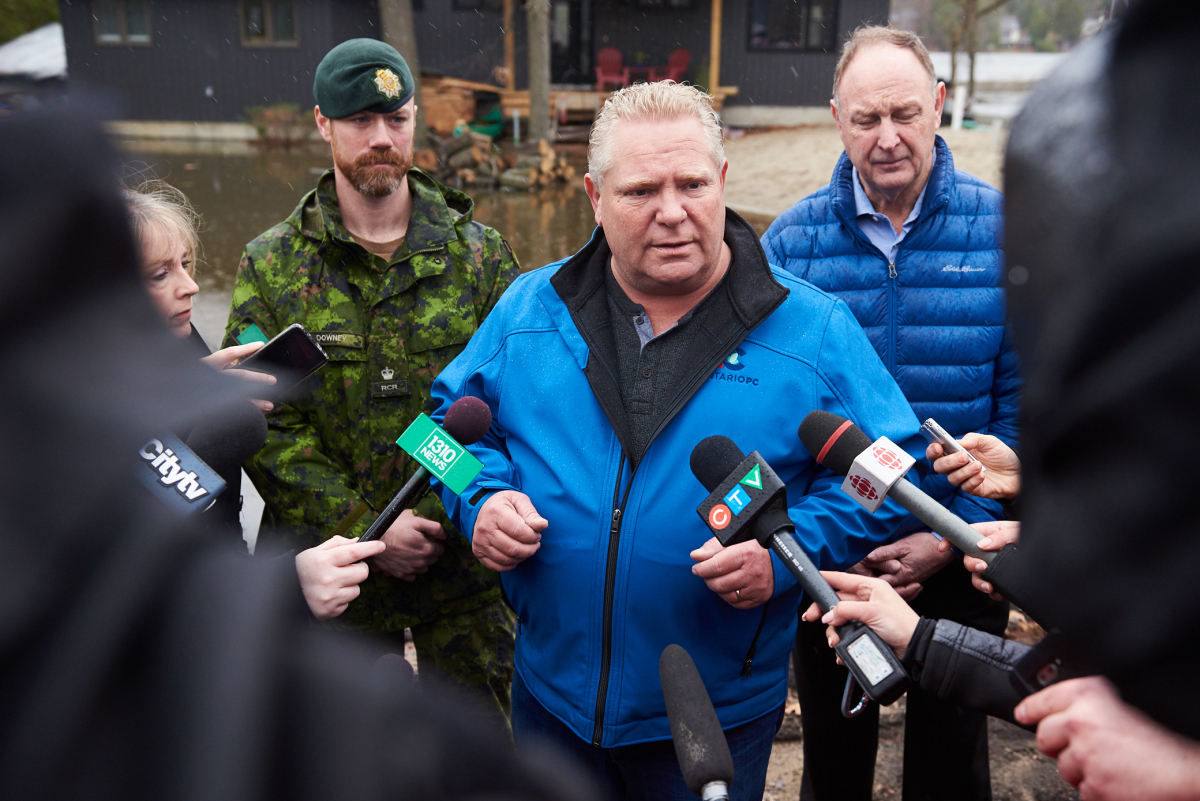Support strong Canadian climate journalism for 2025
Ontario’s newly released flooding strategy is a breath of fresh air, both for its comprehensive proposal to manage flooding in the province and for its multi-pronged, multi-stakeholder approach to addressing the many challenges that are presented by the peril of flooding.
The plan promises action to address the right things on just about all counts. But it lacks details that would be helpful to property owners.
The document, released last month, on March 9, has several strong points, among them its proposed “all of society” approach to ensuring that the right players — including private property owners — are involved in finding solutions to the complex, multifaceted issue of flooding.
Another strong point of the roadmap centres around the challenge of raising awareness, primarily through the proposed creation of a website that will act as a central repository of flood information for the province. The portal will improve both the quality and accessibility of information on flooding, important given the heavily fragmented and siloed nature of flood management in the province.
The document also says a great deal about the highly technical issue of flood mapping, and commits to a multi-year flood-mapping framework that will be led by a newly created team of technical experts.
The plan also touches on: climate change; the key role in flood mitigation played by wetlands and green infrastructure; the importance of risk avoidance and building back better; and the value of reducing injuries and loss of life due to flooding, but also limiting property damage, economic loss and disruption.
The government is, however, encouraged to adopt a wide-ranging approach to inform homeowners about the risk of flooding and the actions they can take to reduce that risk. For instance, will homeowners be able to enter a postal code and get their property-level risk of flooding? Will it become mandatory to provide flood history and flood risk information in real estate deals, as prospective buyers of properties need to know early in the transaction whether a property has flooded before, and whether it is at risk of flooding in the future? Will the province provide property owners with advice about best practices to reduce the risk of flooding, particularly basement flooding due to extreme rainfall?
While the plan does set out the province’s intention to form an urban flooding working group, and requires municipalities to conduct flood vulnerability assessment studies, it is light on other details about actions that will be taken to reduce the risk of basement flooding. Just about every Ontarian is at risk of urban flooding because it can happen any place where it rains heavily in a short time. Actions to reduce urban flood risk are well known and could be launched immediately, like incentives to encourage homeowners to install a backwater valve, sump pump and protective landscaping.
The plan also includes few details regarding funding and implementation.
The strategy mentions the need to forge partnerships with other levels of government for cost-sharing or funding for such things as flood mapping, but there are few specifics of what this would include. Details of these cost-sharing alliances need to be hammered out soon, in order to implement the plan in earnest.
Contingency plans also need to be set out should these funding sources not materialize. While cost sharing is nice, responsibility for flood risk management ultimately rests with the Government of Ontario.
The strategy speaks about the anchor role that will be played by the province’s 36 Conservation Authorities in fulfilling much of the flood plan (they are mentioned 38 times in the 41-page document). Unfortunately, the province reduced their funding last year. Restoration of Conservation Authority flood management budgets would be a welcome move.
The strategy rightly calls for the federal government to extend and re-fund the National Disaster Mitigation Program (NDRP). However, no mention is made of other relevant federal programs, such as those at Infrastructure Canada (IC). The province should push for the inclusion of flood infrastructure to be eligible for the next round of federal funding through IC’s Investment in Canada program.
Ontario’s new flood strategy is a sound and well-crafted plan to address the risk of flood damage caused by the province’s costliest and worsening natural hazard.
It would be welcoming to see details about funding and implementation of the strategy in the months ahead that will allow.that will allow the plan to go from paper to becoming a truly holistic roadmap for flood management in Ontario.






Comments